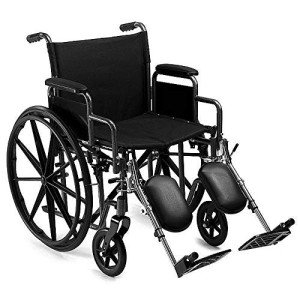Bariatric Wheelchair Seat Width
Seat Width
Having the right seat width is very important to wheelchair users who spend longer durations in their chairs. Too narrow a seat will trigger pressure on the hips and thighs which could result in sores or pressure points. Having too wide a seat can also make it tough for the user to reach the hand rims to move themselves or maneuver in little spaces.
To determine the appropriate seat width a person would rest on a chair usually and have their measurement taken throughout their lap at the largest point which is generally their hips. A wheelchair measuring tape can be utilized to determine this, however a lawn stick is preferred as it prevents individuals from wrapping the tape around their hips which would offer an inaccurate outcome.

The basic wheelchair seat width is 16" (narrow grownup), 18" (basic adult), and 20" (large grownup). For bariatric clients, a 24" seat is available. This heavy-duty additional broad bariatric wheelchair from Medline features swing-away footrests, a carbon steel frame with rust- and chip-resistant chrome plating, and easy-to-clean vinyl upholstery. It has a weight capacity of 500 pounds.
Seat Depth
Traditionally, the seat depth of a bariatric wheelchair was included 2" to the measurement taken at the user's best point (normally their hips). This was indicated to accommodate additional layers of clothing that might be used throughout winter. However, this practice is ending up being less typical as wheelchair users are able to spend more time indoors and are not wearing long coats. This makes the seat depth of a chair lesser when picking a bariatric wheelchair. However, it is still essential to choose an option that uses adequate support for larger users.
The Medline folding additional wide bariatric manual wheelchair features a comfy 24" seat width and a heavy-duty slide tube silver vein frame. click over here now has an adjustable axle and tool-free elevating legrests.
Seat Height
When it concerns figuring out the right wheelchair seat width you ought to constantly measure from the user's largest point which is typically their hips. You will also need to consider whether the user is going to be wearing a winter season coat as this might include 2" to the width needed.
When a wheelchair remains in use it need to just be run on level surface areas with the wheel locks completely engaged. This is to prevent the chair from being able to move slopes that are 10 degrees or higher. It is likewise crucial to remember that any activity that might shift the center of mass in the chair need to be finished with care. This consists of grabbing items that need the individual to lean out of their seat or trying to stand up from it.
Whenever you have the chair in use it is recommended that you regularly examine it for damage and oil any locations that are considered necessary. For instance, the casters need to be lubricated by getting rid of the caster fork and utilizing a multi-purpose grease to apply to the caster stem bearings. Also, the foot plates can be adjusted by loosening up the bolt and then moving them to the desired position. This allows the feet to sit comfortably on the footplate and prevents any pressure points from forming. This can be very unpleasant for the user and if left ignored, can cause pressure sores.
Weight Capacity
Bariatric wheelchairs are developed to support more weight than basic wheelchairs. This makes them stronger and much better equipped to handle falls. They are also generally bigger and larger, making them less maneuverable in tight spaces than standard wheelchairs. They require lorries with unique ramps and lifts to load them, along with chauffeurs who know how to finest transport them from one area to the next.
When choosing a wheelchair, consider its weight capacity as it will be the main determining aspect in whether it will accommodate your traveler's needs. The weight capacity of the chair is frequently noted as a fixed load, suggesting that it suggests the quantity of weight the chair can comfortably hold while standing still. Nevertheless, some producers also note an active load that is based on a drop test and can imitate the impact of somebody sitting down in the chair. This might be a more dependable measurement of the weight limit, depending on your needs.
If you plan to perform activities that shift your center of gravity in the seat (such as grabbing objects), be sure to have front casters pointed in a forward instructions and wheel locks engaged so the chair will not topple. Likewise, check that casters are lubed frequently to prevent excessive wear and abrasions. The lubrication treatment includes eliminating the fork, separating the caster from the wheel, and greasing the caster stem bearings with high-quality multi-purpose grease.
